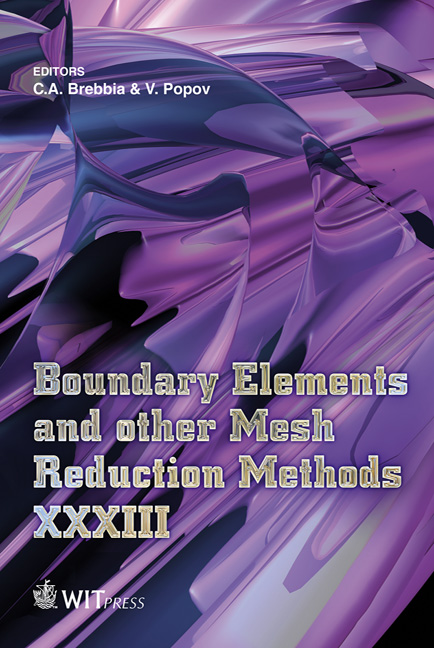BEM Simulations Of Diffraction-optimized Barriers
Price
Free (open access)
Transaction
Volume
52
Pages
8
Page Range
111 - 118
Published
2011
Size
459 kb
Paper DOI
10.2495/BE110101
Copyright
WIT Press
Author(s)
S. Gasparoni, M. Haider, M. Conter & R. Wehr
Abstract
Traffic-related noise has been increasing steadily. Noise barriers are one of the main tools used for noise abatement, and there is still potential for optimization and improvement of the acoustic performance by employing non-standard designs. Simulations are a cost-efficient tool for predicting and planning new noise barrier solutions. The following paper studies some non-standard barrier shapes with particular focus on the formation of a virtual soft-plane for some frequencies. Destructive diffraction from the top edge of the barrier is used in order to optimize the shielding effect of the barrier. Through the use of 2D-BEM simulations different barrier profiles and their effect of shielding are studied. The focus is to obtain useful shielding in the farfield region with intelligent shapes thus permitting a reduction of the barrier height. Keywords: noise barriers, noise abatement, diffraction, 2D-BEM simulations. 1 Introduction Traffic noise has become an important problem with the increase of traffic volume. To counteract this, noise barriers are the most used traffic noise abatement tool; it is in the public interest to reduce the height of the barriers, that being a natural way to reduce the material, and thus the costs. Even if good results can be achieved with the use of appropriate absorbing materials on the surfaces or on part of the surfaces (for example on the top of a T-shape barrier (Fig 1)), the porosity of this kind of materials makes them very sensitive to clogging by dirt and changes their absorbance with time. noise
Keywords
noise barriers, noise abatement, diffraction, 2D-BEM simulations





